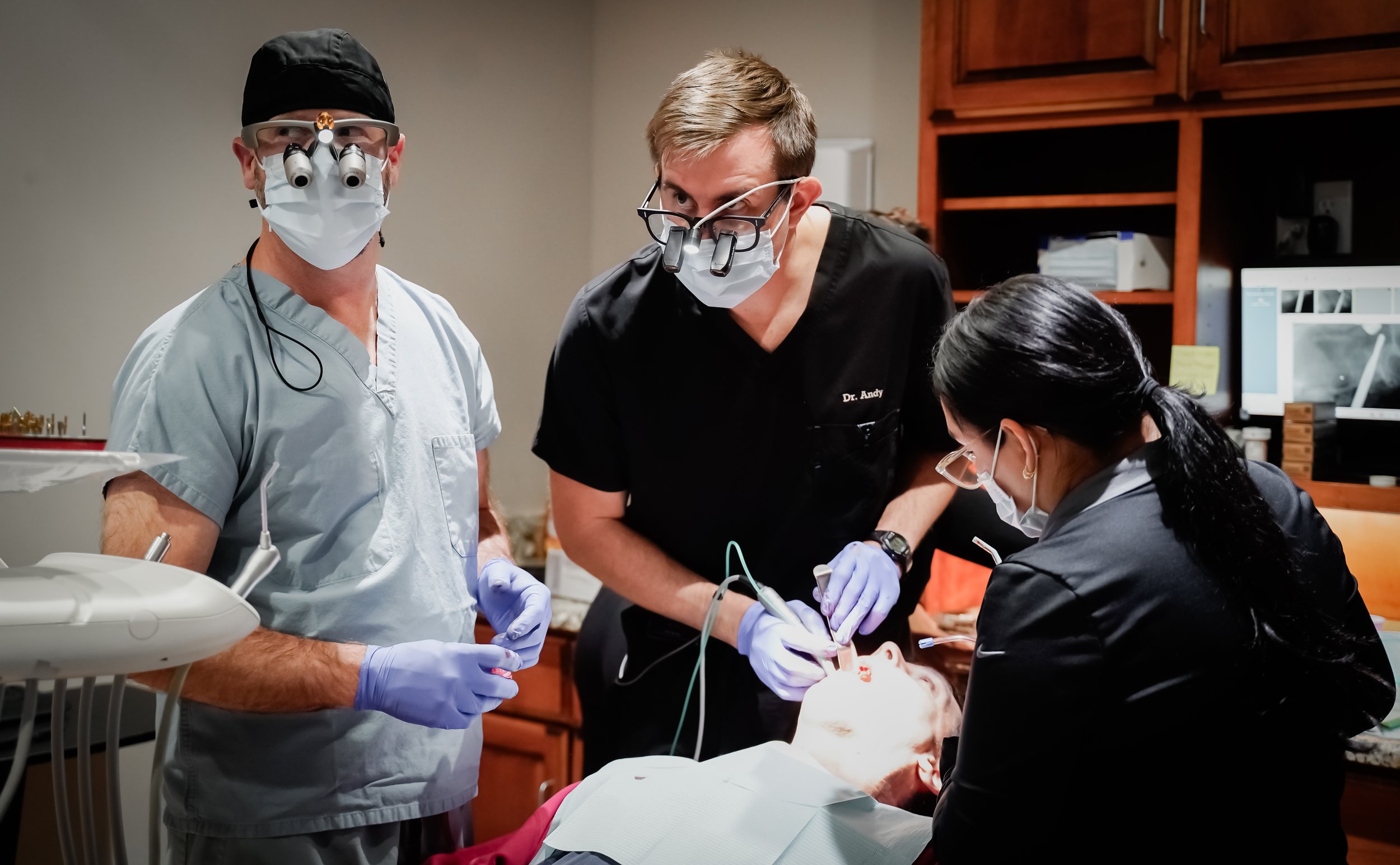
DENTAL EDUCATION
When you pursue your continuing education training with Smiles for Recovery, you will receive comprehensive, implant-specific education across any of our 5 dedicated training facilities. Our program is designed to empower dentists at all skill levels, teaching you to confidently and safely extract and place implants on the same day, all while preserving the existing socket and bone.
This innovative approach is unparalleled in the dental profession, as our experienced instructors are committed to equipping you with the skills to care for your community through effective dental practices. Our curriculum is structured into three tiers: beginner for those new to implant placement, intermediate for dentists already placing immediate implants, and advanced for those with experience in placing full arches.
With Smiles for Recovery, you will gain the knowledge and confidence needed to excel in implant dentistry and make a meaningful impact in your practice.
Beginner
Level I
This level is designed for dentists who have never placed an implant before. Participants will receive foundational training on the principles of implantology, covering anatomy, treatment planning, and essential techniques for safe extractions and immediate implant placements.
-
In addition to these fundamentals, you will explore advanced implant placement techniques, including sinus bumps for bi-cortical stabilization, ridge splits, and flapless procedures. The program will also introduce you to piezo-electric surgery techniques and centrifuge methods for creating fibrin membranes and sticky bone, as well as harvesting techniques for growth factors.
You'll gain valuable insights into ridge split techniques and socket graft principles, along with sinus elevation methods, such as lateral window and crestal membrane elevation. Membrane repair techniques will also be covered. To round out your training, you'll master flap design and suturing techniques, enhancing your overall skills in implantology.
Intermediate
Level II
This tier is designed for dentists with some experience in immediate implant placement, focusing on the complexities of various cases. Participants will learn advanced techniques to enhance implant success rates, manage complications, and improve patient outcomes.
-
Hands-on experience will refine your implant placement and socket preservation skills. The program covers sinus elevation techniques (lateral window and crestal membrane), flap design and suturing, and soft tissue grafting methods, including free gingival and sub-epithelial connective tissue grafts. You’ll also learn Osseo-densification with Densah burs and gain insights into complete implant placement for maxillary anterior cases, often involving hard and soft tissue augmentation and/or immediate temporization.
Participants will explore implant placement for full arch restoration, utilizing locators and overdentures, implant-supported roundhouse bridges, and mixed dentition cases restored with crowns and bridges over natural teeth and implants.
In the intermediate-level soft tissue training, you'll understand the factors crucial for successful bone grafting, learn to diagnose and classify bone defects and manage buccal and lingual flaps for predictable primary closure. You’ll also discover strategies for addressing vertical and horizontal defects, avoiding complications, and exploring mucogingival health and stability around implants while visualizing step-by-step protocols for effective soft tissue techniques.
Advanced
Level iii
This tier is designed for dentists with substantial experience in implant dentistry, particularly those who have placed full arch implants. Participants will explore complex cases, utilizing CAD/CAM technology and multi-disciplinary treatment planning to enhance their expertise in full arch rehabilitation and tackle demanding implant cases with confidence.
-
Key topics include same-day surgery techniques—extracting, placing, scanning, and printing smiles in a day—as well as anterior esthetic implants, the socket shield technique, GBR with sticky bone, full arch FP1/FP3, and sinus augmentation (lateral and crestal). Skills in soft tissue management, piezo-electric surgery, flap design and suturing, and phlebotomy for PRF/CGF will also be covered.
Additionally, the Scan, Plan, and Print Course led by Owen Pryor at TDILAB will focus on scanning upper and lower arches with intraoral scanners, applying dental treatments with 3D printers, and designing and finishing crowns.
Participants will learn to select materials for 3D printing, fabricate fixed and removable prostheses using Dental CAD software, and perform aesthetic finishing processes post-printing. Practical sessions will provide hands-on experience in implant planning, guide design, and the use of CAD software for creating prosthetic materials, ensuring a comprehensive learning experience.




